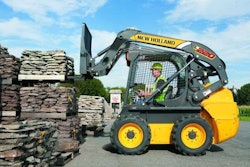One Size Doesn’t Fit All

Slows? Absolutely. Halts? No doubt. But ends? No.
And this goes not only for the overall industry from an economic perspective – that big money game played out on Capitol Hill and in boardrooms that so many of us have been saddled by – but it extends to the actual “yellow iron” on the ground. Or, as I prefer it, to where the real work happens.
Take motor graders, for instance. Grader models, while often keeping the same nomenclature, have gotten physically bigger, heavier and more powerful over the years. In other words, your dad’s 120 is not your 120, regardless of the official designation. OEMs have consolidated grader models into fewer platforms “for manufacturing efficiency sake,” admits one equipment maker’s product specialist. “That’s caused the smaller models to come up.” As such, a market competitor readily advises his dealers: “You may have an opportunity to have customers at the municipal level consider a smaller machine, because their workload really hasn’t changed all that much. The dirt hasn’t gotten heavier or denser. In essence, the work they are doing doesn’t require that larger machine.” A move “down” in model size may actually put those customers into machines closer to the ones they had 15 or 20 years prior.
Right around the time the brain was still trying to process such heady fodder, there popped up a fleeting moment at a World of Concrete 2011 press conference that exemplified the shifting sands of equipment specifications. Case Construction Equipment Marketing Manager Tim O’Brien was providing an overview of the newest additions to his company’s wheel loader line, F-Series versions of the 721, 821 and 921 models. Among the presented comparisons to the previous E-Series machines, it was noted the new 721F will have a standard bucket capacity of 3.25 cubic yards, which is about a quarter of a yard larger than — but still essentially in the same market range — as the 721E. Similarly, at 4.25 cubic yards, the 821F will have a larger standard bucket capacity than the 821E, which essentially is or was a 3.5-cubic-yard loader. Both the Tier 4 Interim 721F and 821F wheel loaders have more powerful engines than their E-Series predecessors, but with claimed fuel efficiency gains of as much as 17 percent. Bigger, more productive machines: Simple evolution, right? So, your dad’s 821 is not your 821. Nothing new with that, right?
Maybe not, but what about the 921F? There were no before-and-after comparisons presented that day for this particular model . . . and rightly so. That’s because the 921F, at 4.75 cubic yards, actually launches a new loader size class for Case. The 921E, still available, is a 5.78-cubic-yard machine, topped only in the current Case wheel loader lineup by the 6.3-cubic-yard 1221E.
So, once again, but only this time going the other way, your dad’s 921 is not your 921. His was a bigger carrier.
There are surely additional F-Series wheel loaders to come. As part of the next generation, a 1221F would make sense, of course. But a “new” model between a 921F and a 1221F, a Tier 4 interim model in the 5- to 6-cubic-yard range? Well, that makes sense now, too.
As always, more to come, rest assured . . .














